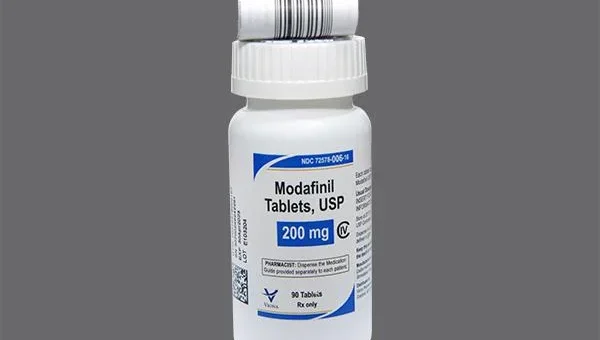The rising cost of health care and the increased focus on outcomes create an opportunity for pharmacists to expand their role.
Pharmacists can help improve medication adherence, polypharmacy, and overall health in medical homes and accountable care organizations (ACOs) by providing patient counseling, addressing duplication of therapy, and reducing readmissions.
Create a Medication Management Strategy
Medication management is one of the most undervalued but critical aspects of pharmacist integration into value based care pharmacy. Medication management helps patients stay well, reduces emergency room visits, and prevents hospitalizations.
Creating a medication management strategy in your practice involves:
- Reviewing past and current medications.
- Evaluating patient needs.
- Collaborating with care team members to determine the best course of treatment.
It also requires identifying and eliminating any drug-drug interactions that could cause harm to the patient or caregiver.
Another essential part of a medication management strategy is communicating with patients about how to use their medications, including doses and special considerations. In addition, it is necessary to ask questions about how they feel or if there are any side effects they have experienced from their medications.
These questions and concerns can help your pharmacist understand a patient’s challenges, such as language barriers, poor health literacy, or limited financial resources. Having an open dialogue with your patient about their medications will improve their understanding of how to use them and reduce the chance that they may need to take their prescriptions as directed.
Medication management is one of the most cost-effective, high-impact areas for healthcare providers to address, as it can save billions in medical costs annually. By creating a comprehensive medication management strategy and implementing it effectively, you can ensure that your pharmacy is at the forefront of providing patient-centered, value-based healthcare services.
Implement a Patient-Centered Care (PCP) Model
As health systems and plans transition to value-based care, pharmacists are positioned to help improve patient outcomes and deliver cost-effective solutions. However, the shift from fee-for-service to value-based care is often challenging.
Fortunately, several strategies exist to expand value-based pharmacist-provided care in your medical practice. Here are some of them:
- Implement a Patient-Centered Care (PCP) model
The Patient-Centered Care model prioritizes patients’ unique needs and preferences to provide the best possible care. This involves acknowledging the patient as a whole person, being responsive and empathetic to their emotions, building a trusting alliance, enhancing communication and exchanging information, sharing decision-making, and enabling continuity of care and self-management.
- Coordinate the patient’s care at all health system levels, including specialists and other providers.
Coordination of care is a core function of P.C., assuring that the patient navigates the healthcare system smoothly and without confusion or improper maintenance. This coordinating function can be achieved with or without the capacity to provide direct service to the patient.
- Engage in value-based payment models.
As healthcare systems and health plans transition to value-based payment models, pharmacists are positioned to help improve results, reduce costs, and lower hospitalization rates. Payors are interested in these models because they offer a way to hold providers accountable for better outcomes, leading to healthier patients and lower overall costs.
Invest in Medication Therapy Management (MTM) Software
MTM is an important service that helps pharmacists and patients manage medications. When done well, it can decrease overall healthcare costs and improve medication adherence.
However, when pharmacy MTM programs fail to perform as expected, it can be hard to understand why. One of the main reasons is a need for more understanding of the total return on investment for these services.
For example, MTM software can help pharmacy staff streamline workflows and capture member-specific information. It can also be used to track outcomes and facilitate CMS reporting.
When it comes to MTM programs, the use of technology can drastically reduce the time and effort required for administering these programs. It can also allow pharmacists to focus more on providing patient-specific interventions rather than administrative tasks.
A medication therapy management (MTM) program is a service offered to Medicare Part D beneficiaries that helps pharmacists and patients work together to better manage their medications. Typically, MTM services include drug regimen reviews, prescription reconciliation, and education to promote medication adherence.
MTM is a critical component of value-based medication programs designed to encourage collaboration between healthcare professionals and patients with complex conditions and high-cost drugs. Among other benefits, MTM can reduce costly hospital readmissions and decrease the need for emergency room visits.
Invest in Medication Reconciliation
Medication Reconciliation is an important patient safety initiative that reduces the risk of medication errors. However, it has yet to prove easy to implement successfully in general practice settings due to various challenges.
One of the most significant challenges is that medication reconciliation requires the involvement of pharmacists, nurses and physicians at each step in the process. This can lead to a need for more clarity about the role of each individual in the medication history process and increase the likelihood that unintentional changes will occur.
To address this issue, the National Safety and Quality Health Service (NSQHS) has published standards. They include several actions and recommendations, including the need for clear roles and responsibilities.
In addition, NSQHS Standard 4 – Medication Safety requires that medications should be matched to the patient’s Best Possible Medication History (BPMH). The BPMH is the complete list of a patient’s regularly prescribed medications.
Unfortunately, many physicians and nurses don’t take the time to create accurate lists of a patient’s medication regimen. This can lead to unintentional changes and increases the likelihood that patients will experience adverse drug events.




